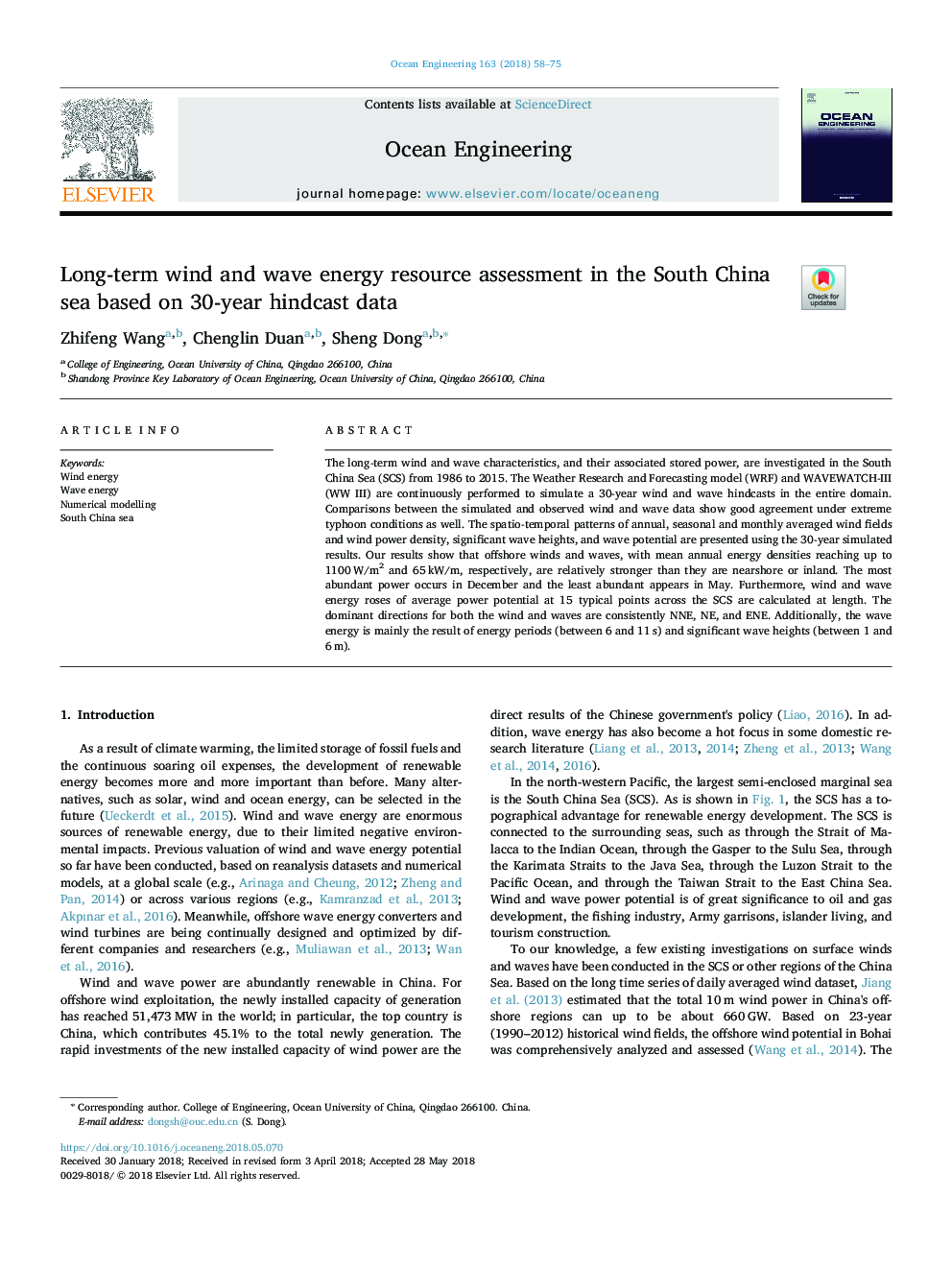| Article ID | Journal | Published Year | Pages | File Type |
|---|---|---|---|---|
| 8061897 | Ocean Engineering | 2018 | 18 Pages |
Abstract
The long-term wind and wave characteristics, and their associated stored power, are investigated in the South China Sea (SCS) from 1986 to 2015. The Weather Research and Forecasting model (WRF) and WAVEWATCH-III (WW III) are continuously performed to simulate a 30-year wind and wave hindcasts in the entire domain. Comparisons between the simulated and observed wind and wave data show good agreement under extreme typhoon conditions as well. The spatio-temporal patterns of annual, seasonal and monthly averaged wind fields and wind power density, significant wave heights, and wave potential are presented using the 30-year simulated results. Our results show that offshore winds and waves, with mean annual energy densities reaching up to 1100â¯W/m2 and 65â¯kW/m, respectively, are relatively stronger than they are nearshore or inland. The most abundant power occurs in December and the least abundant appears in May. Furthermore, wind and wave energy roses of average power potential at 15 typical points across the SCS are calculated at length. The dominant directions for both the wind and waves are consistently NNE, NE, and ENE. Additionally, the wave energy is mainly the result of energy periods (between 6 and 11â¯s) and significant wave heights (between 1 and 6â¯m).
Related Topics
Physical Sciences and Engineering
Engineering
Ocean Engineering
Authors
Zhifeng Wang, Chenglin Duan, Sheng Dong,
